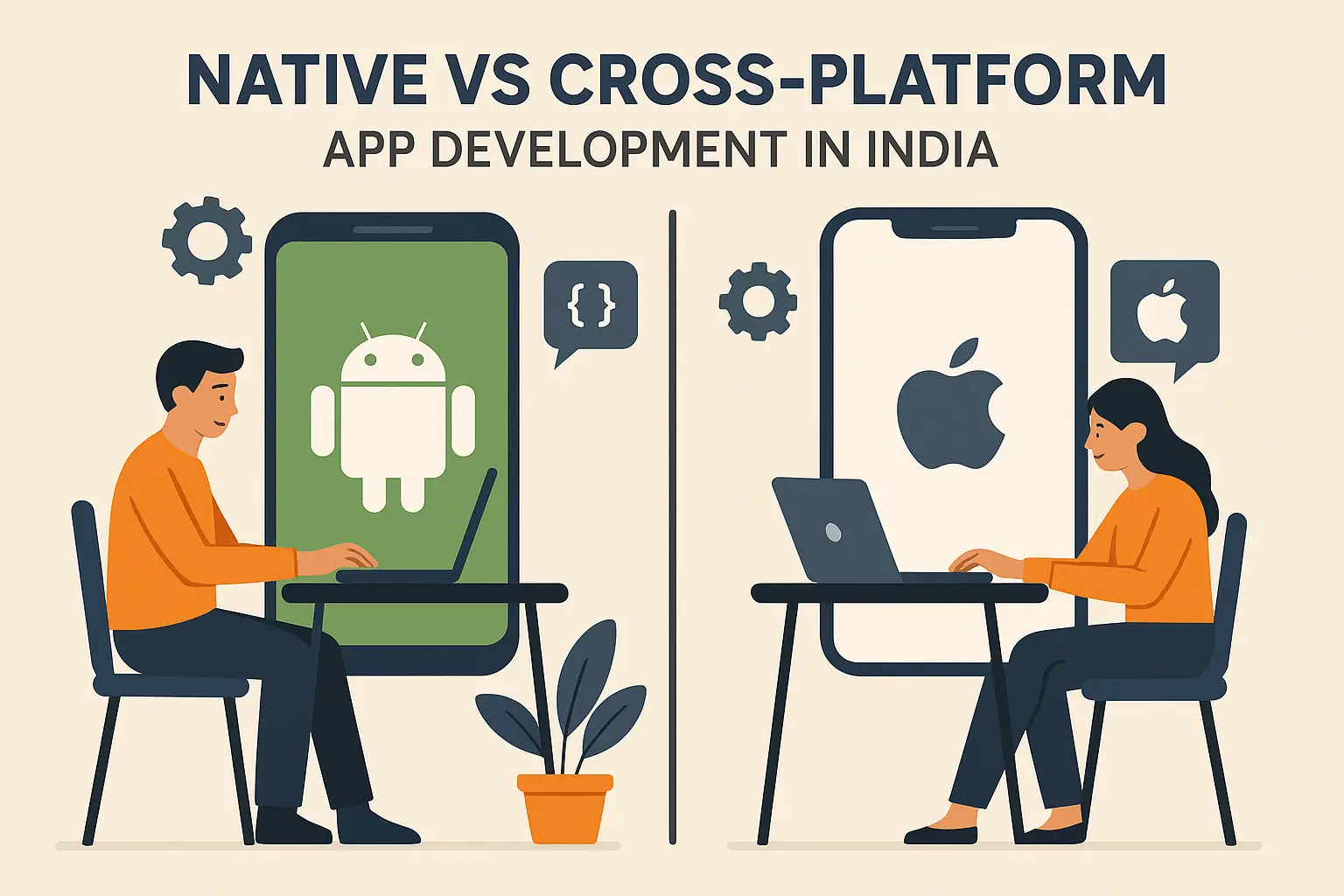Top 7 Best Differences – Ultimate Guide to Native vs Cross Platform App Development in India
If you are planning to build an app, understanding native vs cross platform app development in India is an essential first step. This comprehensive guide explains everything you need to know to decide which approach is best for your goals, budget, and timelines in 2025 and beyond.
1. What Is Native vs Cross Platform App Development in India?
In India, native app development means building separate apps for Android and iOS, each written in the platform’s preferred language. For Android, that usually means Java or Kotlin. For iOS, it’s Swift or Objective-C. This method offers unmatched performance and the most polished user experience. In contrast, cross platform app development uses frameworks like Flutter or React Native to create a single codebase that runs on both platforms. This saves time and money, but can have minor trade-offs in performance or platform-specific look and feel.
2. Performance and Speed
When evaluating native vs cross platform app development in India, performance is a top factor. Native apps run faster because they’re compiled specifically for the target operating system. Complex animations, 3D graphics, and intensive data processing are smoother in native apps. Cross platform apps have improved significantly, but for maximum performance, especially in gaming or high-load apps, native is preferred.
3. Development Time and Cost
Building native apps requires two separate development teams, increasing time and costs. In India, a native Android app can cost ₹6–10 Lakhs, and iOS the same again. This doubles expenses if you want both platforms. Cross platform development in India typically costs 30–50% less because developers maintain one codebase. Startups often choose cross platform to launch faster and save budget. For a detailed cost breakdown, read our mobile app cost guide.
4. User Experience and Design Consistency
Native apps provide a more refined user experience because they adhere closely to Android and iOS design standards. Gestures, transitions, and animations feel perfectly integrated. With cross platform frameworks like Flutter, you can get very close to native UI, but small inconsistencies sometimes occur. When deciding on native vs cross platform app development in India, think about how critical pixel-perfect design is for your audience.
5. Maintenance and Updates
Maintaining native apps requires updating and testing two separate codebases every time you release a new feature. This increases maintenance costs. Cross platform apps allow you to roll out updates simultaneously. This saves time and helps ensure feature parity across platforms.
6. Access to Device Features
Native apps have direct access to all device hardware and the latest APIs. If your app relies on advanced features like Bluetooth, ARKit, or biometric authentication, native is the safer choice. Cross platform frameworks support many APIs, but sometimes lag behind the latest OS updates. For example, it can take weeks for cross platform frameworks to integrate brand new hardware capabilities.
7. Scalability and Long-Term Strategy
In the long run, many businesses start with cross platform development to validate their idea quickly, then migrate to native as their user base grows. This approach balances speed and cost upfront with performance and scalability later. In India, this phased strategy is common among startups and SMEs.
Popular Frameworks for Cross Platform Development
When exploring native vs cross platform app development in India, you will encounter popular frameworks such as:
- Flutter: Developed by Google, known for near-native performance.
- React Native: Backed by Meta, with a large ecosystem.
- Xamarin: Powered by Microsoft and integrated with .NET.
Each framework has pros and cons depending on your team’s skills and project requirements.
FAQs About Native vs Cross Platform App Development in India
- Q: Is cross platform app development in India always cheaper?
A: Generally yes, because you develop one codebase. However, savings depend on complexity. - Q: Can I switch from cross platform to native later?
A: Yes. Many apps start cross platform and rebuild native modules as they scale. - Q: Are cross platform apps slower?
A: Modern frameworks are fast, but native still has the edge for demanding apps.
Common Mistakes to Avoid
When comparing native vs cross platform app development in India, avoid these pitfalls:
- Choosing solely on cost instead of considering long-term needs.
- Not factoring in maintenance and update cycles.
- Failing to align the approach with your target audience and features.
Example Use Case
A healthcare startup in Bangalore built their MVP with Flutter to launch quickly on Android and iOS. As adoption grew, they migrated critical modules to native development to improve speed and security. This hybrid approach balanced affordability and scalability.
Additional Resources
Why Choose Right Web Solution?
At Right Web Solution, we guide clients through native vs cross platform app development in India to make smart decisions. With over 13 years of experience, we build secure, scalable apps that help you grow.
Learn more about our Mobile App Development Services.
Native vs cross platform app development in India is a critical decision that affects every aspect of your app. This guide helps you weigh the top 7 key differences and choose the right strategy for your business.
Ready to build your app with a reliable team?
📞 Call: +91 8850 907518
📩 Email: hello@rightwebsolution.com









